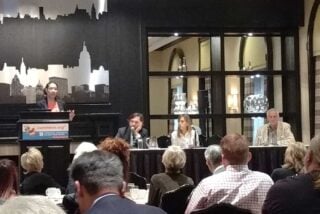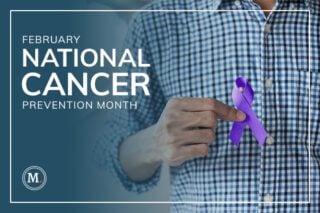
The Mesothelioma Applied Research Foundation recently held its International Symposium on Malignant Mesothelioma in New York City, the second of two events scheduled for 2018. Doctors, nurses, patients, and caregivers met in Manhattan to discuss the disease, current treatments, and cutting-edge tactics aimed at helping mesothelioma patients live longer, better lives.
Since its inception, the Meso Foundation has funded more than 100 studies through its research grant foundation, totaling more than $10 million. In total, studies funded by the non-profit have led to about 240 articles being published in more than 80 journals. In addition, the vast majority of donations are used to fund its ongoing programs, while helping close to 600 patients, caregivers, and the bereaved each month.
Mesothelioma Symposium Panel Discussions
The one-day event began with a welcoming speech from Meso Foundation executive director Mary Hesdorffer and Board of Directors chair Dr. Marjorie Zauderer. Patient advocate Heather Von St. James then offered a few words and a moment of silence for Dr. David Sugarbaker, who was a pioneer of modern pleural mesothelioma treatment and passed away earlier this year.
Following a short moment of silence, the first of seven breakout panel sessions began with a discussion of what diagnostic and treatment options are available for patients with pleural mesothelioma. Dr. Chuong Hoang talked about the accuracy of different types of mesothelioma biopsies, citing the efficacy of a thoracotomy or video assisted thoracoscopic surgery (VATS) to properly diagnose the disease.
Dr. Raja Flores then covered each of the treatment options available for patients once a diagnosis of pleural mesothelioma has been made. According to Dr. Flores, the mortality rates associated with radical surgeries, including pleurectomy/decortication (P/D) and extrapleural pneumonectomy (EPP), over the past decade have been cut in half. He noted that EPP mortality in 2008 was about 7%, but has fallen to about 3 – 4% today. P/D surgeries have seen a similar decline, falling from 4% to about 1 – 2% over the same timeframe.
The second session was about peritoneal mesothelioma and introduced several questions, including how it actually develops in the abdomen. Though the panelists all agreed that asbestos exposure is a cause of the disease, they aren’t sure how the asbestos fibers end up in the abdominal cavity. There was some belief that the toxic mineral could be swallowed, ending up in areas of the body where it can be absorbed.
Self-care and emotional health were also a topic of discussion during the symposium. Alexander “Sandy” Robb, an 8-year mesothelioma survivor, told attendees that it isn’t just the patient who receives the diagnosis who is stunned. A patient’s family and friends are likely experiencing similar feelings, especially when they don’t understand anything about the disease and are learning about it for the first time. Robb also stressed the importance of education, especially as a coping mechanism to help patients understand what it is that they can expect.
The panel also touched on “anticipatory grief,” the idea of grieving for a person who is still alive, and were quick to dismiss the notion of mesothelioma becoming a patient’s identity. While the panel stressed the overall need for patients to make certain plans, including medical proxies and power of attorney filings, they also need to have a sense of hope.
Treating Mesothelioma More Effectively
The afternoon featured several conversations, including one around systemic therapies and their roles in the treatment of mesothelioma. When asked whether immunotherapy, which has shown promise in clinical trials, should be the standard of care for mesothelioma in 2018, Dr. Evan Alley mentioned that the innovative therapy had a role, but not as a first line therapy, though researchers are awaiting results from ongoing studies. Even so, in recent years, the National Comprehensive Cancer Network (NCCN) has included a form of immunotherapy, bevacizumab, along with chemotherapy drugs pemetrexed and cisplatin as a first-line therapy for pleural mesothelioma. First-line therapies are often seen as the best treatment available and are the first to be given to a patient.
During the radiation oncology portion of the event, several doctors discussed the role of radiation therapy for pain reduction and to kill residual cancer cells following surgery. Attendees learned about the types of radiation available (proton, photon, electron, and particle radiation), and were also told about the side effects associated with radiation therapy. During the conversation, panelists described several of the more common side effects, like fatigue, difficulty swallowing, and nausea, but also touched on more long-term symptoms. These issues, despite being uncommon, may last for years and cause nerve damage, trouble swallowing, and hard breathing because, in the words of one panelist, the body doesn’t “forget” about the radiation.
Although this is the last symposium of 2018 hosted by the Mesothelioma Applied Research Foundation, the organization is already gearing up for next year’s event scheduled for March in Bethesda, MD. Events like these help generate support and funding for future mesothelioma research. Despite the disease’s rarity, doctors and researchers across the U.S. and around the world are working together to determine what treatments will likely become available and how they can extend patients’ lives. Symposiums like this one also give patients hope, and by constantly sharing information about new advancements, patients are living longer.




